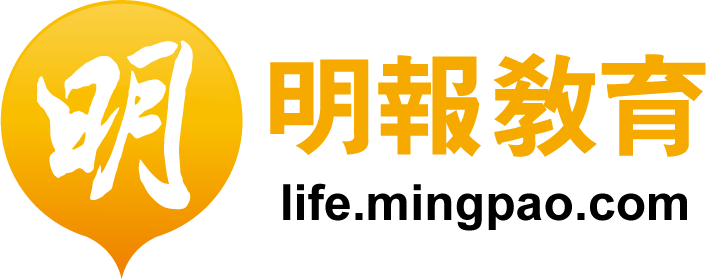雙語社評齊齊聽
【明報專訊】THE Hong Kong and Shenzhen governments have signed a memorandum of understanding related to the development of the 87-hectare Lok Ma Chau Loop into a Hong Kong/Shenzhen Innovation and Technology Park, ending two decades of dilly-dallying.
香港及深圳政府簽訂合作備忘錄,將在佔地87公頃的落馬洲河套地區,發展「港深創新及科技園」,結束長達廿年的拖拉。
The development of the Loop dates back to time before the handover, when efforts were made to bring the Shenzhen River under control. The project involved straightening a bend of the river near Lok Ma Chau. As a result, the Loop, which was originally under Shenzhen's jurisdiction, became on the southern side of the Shenzhen River and fell within Hong Kong's city boundary. The State Council decreed on the day of the handover in 1997 that the ownership of the Loop should belong to Shenzhen, but the right of its administration should belong to Hong Kong. After years of discussion about how the two governments should cooperate on the Loop, Donald Tsang, the then Chief Executive, included its development as one of the ten major infrastructure projects in his 2007 Policy Address, suggesting that the two sides negotiate on how to cooperate under the principle of "joint development and mutual benefits". However, due to disagreements over issues such as the ownership of the land, there was much cry and little wool. Last year, the Shenzhen government made a concession at last and accepted that the Loop belonged to Hong Kong, paving the way for the signing of the memorandum.
河套區發展最早可追溯至回歸前,因治理深圳河,將靠近落馬洲的河段「裁彎取直」,導致原屬於深圳方面的河套地區,變成位於深圳河以南,落入香港特區範圍,國務院在1997年香港回歸日頒令,規定「業權歸深圳,管理權屬香港」。港深討論河套區合作多年,前特首曾蔭權在2007年施政報告,就將河套區發展納入十大基建工程,由港深雙方按「共同開發、共享成果」原則磋商合作,惟因土地業權問題等分歧,一直只聞樓梯響。直至去年,深圳讓步,同意河套地區屬港方擁有,為雙方簽訂今次備忘錄鋪平道路。
It used to be decided that the Loop's ownership and administrative right belonged to Shenzhen and Hong Kong respectively. But they are both in Hong Kong's hands now. Things having developed in such a way, there are, unavoidably, concerns about why the Shenzhen authorities made such a concession. Concerning the matter, the Hong Kong SAR government stressed that no backroom deals exist. According to the "joint development mechanism" agreed by the two sides, Hong Kong's legal and land administration systems will remain in force in the Loop. Though a joint task force will be set up by the two sides to "advise on" the development of the park, the directors of an affiliated company, which will be tasked with the park's construction and operation, will be appointed by the Hong Kong government. In other words, Hong Kong will have the final say. Furthermore, to dispel doubts that the park will be reduced to another real estate project and a "backyard" of mainlanders, the SAR government has also promised that the region will be reserved for research on new and high technologies and the cultural and creative industries only, and will involve no residential housing projects. The whole project will be run in a non-profit manner with all the earnings reserved for the park. "How the earnings will be shared" is not a question at all.
由「業權歸深圳,管理權屬香港」,變成無論業權還是管理權皆由港方擁有,難免令人關注深圳為何願意讓步。對此特區政府強調,今次合作不存在任何秘密交易,根據雙方達成的「共同開發機制」,河套區將沿用香港特區法律和土地行政制度,雖然港深雙方會成立聯合專責小組,就科技園發展「提供意見」,但負責建設和營運的香港科技園附屬公司,其董事會將由港方委任,話事權仍在港方。特區政府還承諾,有關地區是用作高新科技研究及文化創意,不會有住宅項目,以釋除科技園淪為另一地產發展項目、成為內地人「後花園」的疑慮。另外,整個項目會以非牟利原則營運,所有盈利收益將用於河套發展區,不存在港深如何分紅的問題。
These terms are very advantageous to Hong Kong indeed. However, it would be too naive to believe that Shenzhen is doing Hong Kong a huge favour or giving Hong Kong a generous gift. For more than a decade, Shenzhen's innovation and technology has moved forward in leaps and bounds, and is now called, by the international media, "the Chinese Silicon Valley". Tencent, the Shenzhen-headquartered company which went public in Hong Kong only thirteen years ago, has now a market value of over HK$1 trillion and is one of the four biggest internet technology companies globally. As for DJI, which develops Unmanned Aerial Vehicles (UAVs) and aerial filming systems, it was established eleven years ago and is now the trendsetter in commercial UAVs worldwide.
觀乎以上條款,對港方的確相當有利,然而以為深圳方面「賣大包」「大贈送」,恐怕也太天真。過去10多年,深圳創科業騰飛躍進,被國際媒體形容為「中國矽谷」。13年前,總部設於深圳的騰訊才在香港掛牌上市,到現在市值已超過萬億港元,成為全球四大科網公司之一;至於研發生產無人飛行器和飛行影像系統的大疆,11年前成立,現已在全球商用無人機佔據領頭羊地位。
The SAR government is planning to formulate measures to make it more convenient for mainland talent to travel to and from the park and work there. This is understandable. But the government must, at the same time, encourage mainland innovation and technology companies stationed in the park to cooperate with their Hong Kong counterparts and recruit more Hong Kong talent. It should also consider supporting Hong Kong start-ups which intend to move to the park by, for example, providing tax credits. All in all, the government has a responsibility to make sure that the project will benefit Hong Kong people instead of being a springboard for non-locals.
特區政府打算制訂措施,方便內地人才來往園區工作,可以理解,但同時亦必須鼓勵進駐的內地創科企業,與本地公司合作,多聘本港青年人才;政府還應考慮向有意進駐的本港初創企業,提供稅務優惠等方面的支持。政府有責任確保項目令港人受惠,不會只為他人作嫁衣裳。
明報社評2017.01.04
Presented by lecturers of Hong Kong Community College, PolyU and The Hong Kong Polytechnic University
Jason Chan
Lecturer
www.hkcc-polyu.edu.hk/staff_directory/language_communication/CHAN,_Jason_Siu-chuen-168.html
李向昇
講師
www.hkcc-polyu.edu.hk/staff_directory/language_communication/LEE,_Heung-sing-358.html
【Bilingual Editorial】





